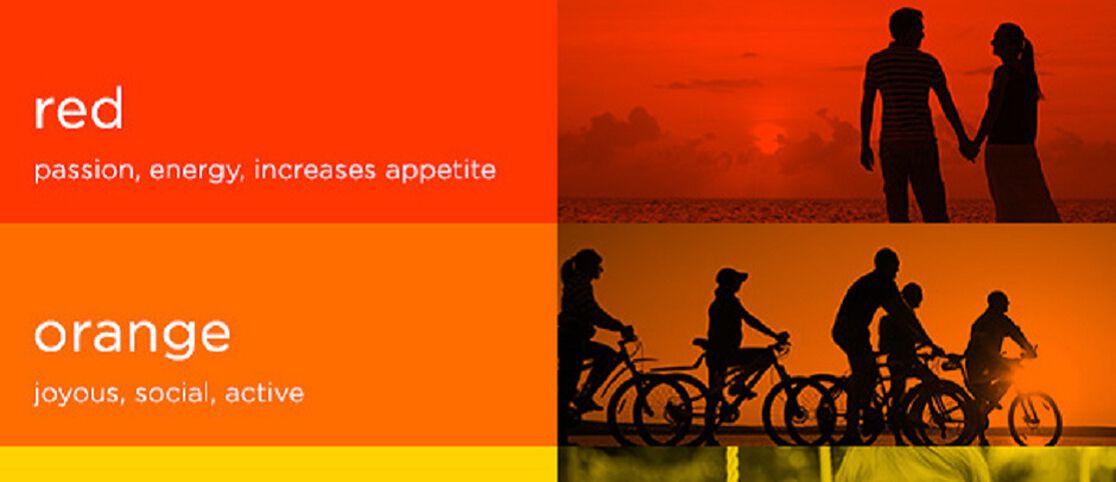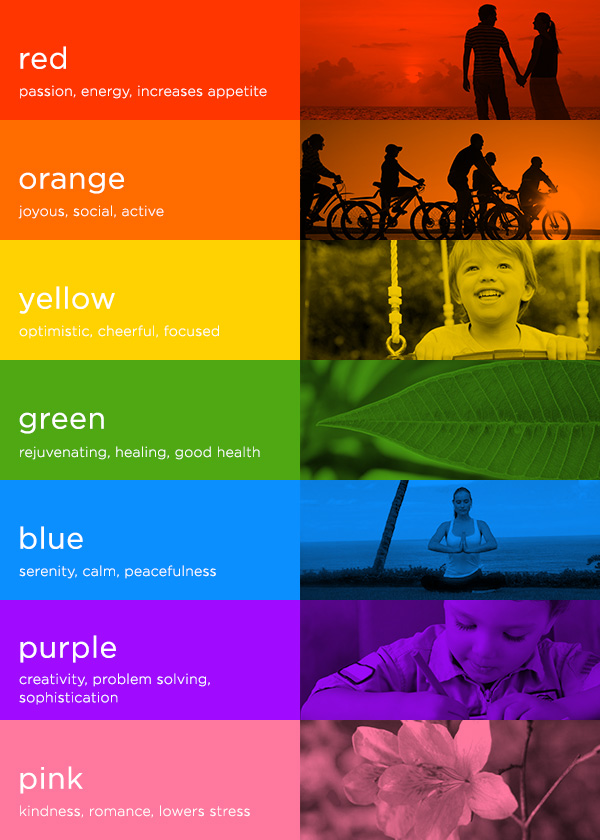Ever notice how a brightly colored living room or a crisp white office space influences how you feel?
Colors impact people in varying ways depending on past associations and how your brain processes those hues. The color psychology guide below includes the most common color and mood associations, so you can decorate based on how you’d like each room in your home to feel. Keep in mind that various tones of the same color will evoke different moods. Take blue for example, a cool beach-y blue is said to be great for relaxing spaces, while a deep navy is still intimate and cozy but more formal. You can also use warm or cool shades of the same color to change the ambiance and feeling a space conveys.
The easiest and most affordable way to bring color into your home is with paint. Be sure to buy no-VOC paint. You can also liven-up a room by painting the furniture. Buy a dresser from a yard sale and rehab it with a coat of your fave color and new knobs—voila! A beautiful new piece of furniture that brings a pop of color—and emotion—into a room.
Check out the color-mood associations below:
Red is typically associated with passion. Red can increase your heart rate and respiration. And while red can encourage warmth and passion, it can also raise feelings of intensity. This can be a good thing for a dining room where you hold lots of lively parties or in an office space where you need energy and drive. You can use red as an accent color for one wall or be bold and paint an entire room red. Red is also said to make people eat more—so for that big dinner party you’re planning, use red cloth napkins or a red table runner to ensure your guests really enjoy themselves and indulge.
Orange is associated with being active and social—perhaps that’s why you see a lot of workout clothing in shades of orange. In decorating, use a pop of orange in a living room, dining room, children’s room, or conference room to encourage more chit chat.
It’s no surprise that cheerful yellow makes us feel happy—it’s the color associated with sunshine and many types of flowers. Yellow also make us feel optimistic. Pops of yellow are great for making people feel cheerful and even focused. Yellow is a great color for an office or to add light to any dimly-lit space like a hallway. But be careful not to use too much yellow. An all yellow room is said to increase anxiety and restlessness, and one study shows babies cry more often in yellow rooms. Yellow also reflects the most amount of light, so avoid putting it on the wall where your television or computer sits as it can cause eye strain.
Green reminds us of nature and is a rejuvenating color. Green is also associated with good health and healing. Try painting a bathroom in shade of leaf-y green. Or put splashes of green throughout your entire house! Green is also the color people are able to be around the longest without feeling overwhelmed.
Blue is calming. It’s the color of the sky and the ocean, so subconsciously it makes us think of serene environments. Add splashes of blue to a room evokes a sense of tranquility.
Blue is also said to lower blood pressure, and slow respiration and heart rate—making it a great color for a space where you practice yoga, sleep, or anywhere you want to unwind. Fun fact: Blue is so widely thought to be calming that in Glasgow, Scotland blue street lights were installed in hopes of lowering crime rates and suicide, and a number of other cities soon followed suit.
Once reserved for royalty, today purple appeals to your creative side. It combines the calmness of blue and the passion of red—making purple a color of problem solving, creating, and ambition. Paint an office, workplace, or kids playroom in a shade of purple to get the creativity flowing. Darker purple shades evoke a sense of sophistication.
Not just for baby girls, pink is a romantic color and is very soothing. (Have you seen pictures of Martha Stewart’s pink house?) Being around this soft shade is also said to help insomnia and lower stress. Try painting a bathroom pink or putting pink accents in your office for a sweet look.
Use this handy pinnable graphic as your guide:
Do you consider color when you decorate? Tell us in the comments.
We aim to provide you with the most honest and credible information possible. This article was reviewed for accuracy by The Honest Team and its internal technical experts.
blog_review_statement











